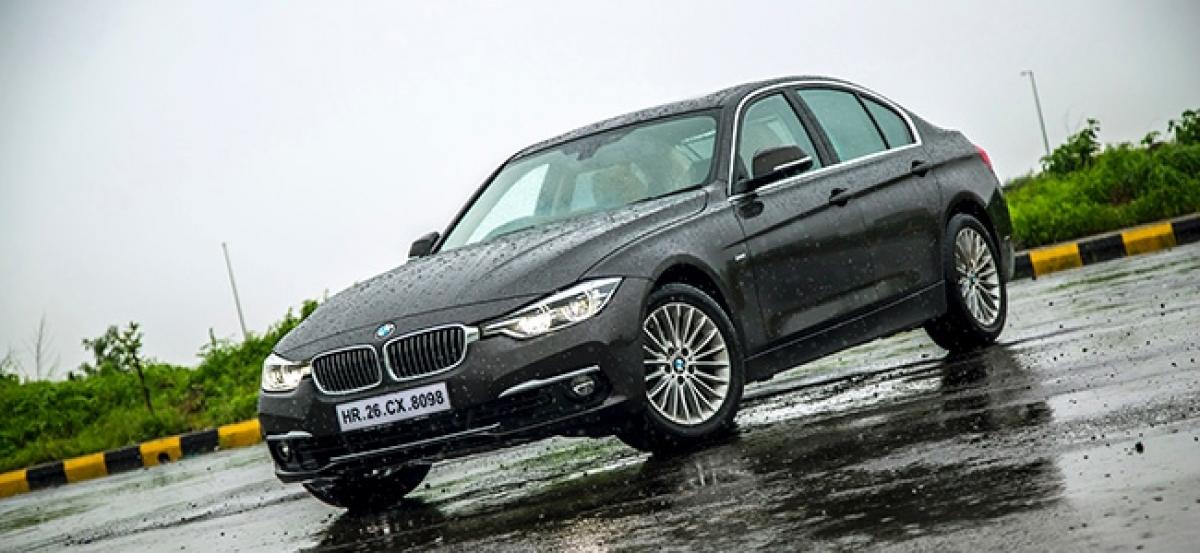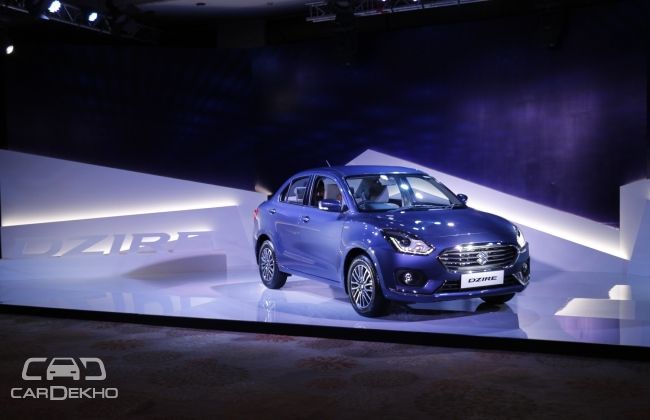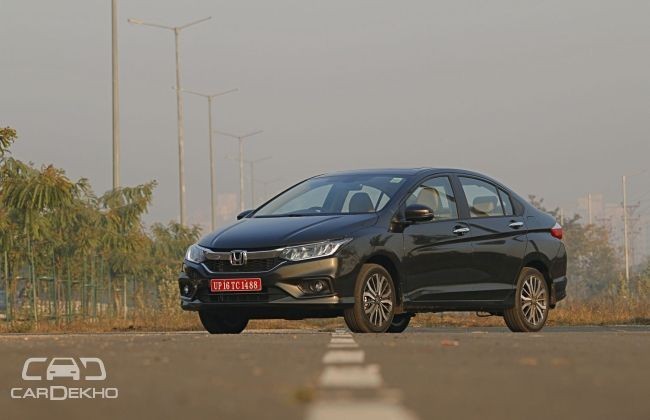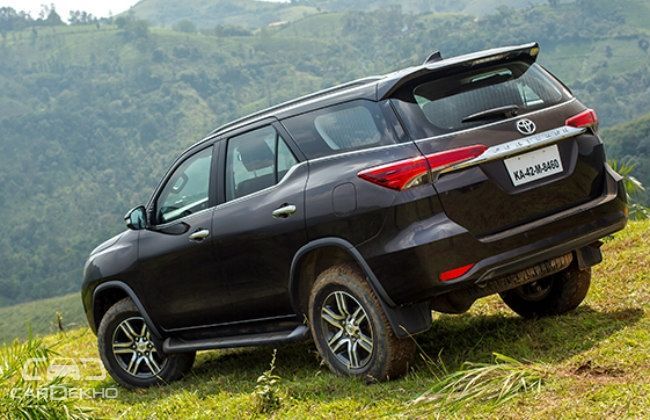Live
- How live cricket score apps are revolutionizing cricket news consumption?
- BJP releases ‘charge sheet’ against BJD govt
- District Nodal Officer Venkataramana announced the intermediate results
- She team that stopped child marriages
- Medical devices sector needs separate rules, says industry body AiMeD
- Andhra Paper declares lockout
- Opposition INDIA bloc working on 'one year, one PM' formula: PM Modi
- Delhi HC quashes FIR for outraging woman's modesty, orders man to assist Traffic Police for a month as settlement
- 'Apologise to families of farmers who committed suicide in Vidarbha', Amit Shah dares Sharad Pawar
- SC Collegium recommends appointment of a permanent judge in Chhattisgarh HC, extension of term of two judges
Just In

Since the implementation of GST is round the corner, the chances are high that the proposed extra cess will be a reality. If the current classification of cars is carried over (high probability), there will be four broad categories of cars:
Should You Buy A New Car Now Or After GST Is Rolled Out?
India is finally on the verge of having a simplified taxation system. But before the Goods & Service Tax (GST) comes into effect on July 1, 2017 (proposed), and replaces multiple state and central taxes with a single levy, let's try to figure out how it will impact car prices in India.
As of May 19, 2017, it's certain that cars will fall under the 'luxury' bracket and will attract a 28 per cent flat GST. Over and above, an extra cess of 1, 3 or 15 per cent is proposed depending on the classification of cars.
1. Small cars – Cars under four-metre length powered by a petrol engine not greater than 1.2-litre or a diesel engine not greater than 1.5-litre by displacement
2. Mid-size cars – Cars over four-metre length powered by either a petrol or a diesel engine not greater than 1.5-litre displacement
3. Luxury cars – Cars over four-metre length powered by either a petrol or a diesel engine that is greater than 1.5-litre displacement
4. SUVs – Cars over four-metre length and 170mm ground clearance powered by either a petrol or a diesel engine that is greater than 1.5-litre displacement
Here's a comparison of the current tax levied on these cars and proposed GST in comparison:
Table - A
| Existing Taxes Levied | Proposed GST | ||||
| Base | Cess | Net | |||
| Small Cars | Petrol | 26% - 34% | 28% | 1% | 29% |
| Diesel | 27.5% - 35.5% | 28% | 3% | 31% | |
| Mid-size Cars | 40.5% - 48.5% | 28% | 15% | 43% | |
| Luxury Cars | 44.5% - 51.5% | 28% | 15% | 43% | |
| SUVs | 47.5% - 54.5% | 28% | 15% | 43% | |
Break-up of existing taxes mentioned in Table - A is as under in Table - B:
Table - B
| Excise | VAT | Infra Cess | Luxury Cess | Octroi (select states) | Green Cess (select states) | Total tax (incl. in ex-showroom price) | ||
| Small cars | Petrol | 12.5% | 12.5% - 14.5% | 1% | 1% for any car that costs over Rs 10 lakh | Around 4% in select states on all cars | 1% on Diesel vehicles with engine capacity exceeding 2000cc | ~26% - 34% |
| Diesel | 12.5% | 12.5% - 14.5% | 2.5% | ~27.5% - 35.5% | ||||
| Mid-size cars | 24% | 12.5% - 14.5% | 4% | ~ 40.5% - 48.5% | ||||
| Luxury cars | 27% | 12.5% - 14.5% | 4% | ~ 44.5% - 51.5% | ||||
| SUVs | 30% | 12.5% - 14.5% | 4% | ~ 47.5% - 54.5% |
Readers note – Ex-showroom price of a car is inclusive of all these taxes. VAT is applied over and above every other tax. As a result, the total tax will actually be higher than what we are assuming. Also, Green Cess and Octroi is charged in select states. The lower tax percentage is the minimum of all possibilities while the higher tax percentage is the maximum. Registration charges and insurance are not included in the ex-showroom price. VAT is charged at different rates in different states.
Before we take an example of a car; going by Table A, it is clear that in the case of small cars (both petrol and diesel) GST will end up increasing prices. However, that may not hold true for all those states that charge Octroi, for example, Maharashtra.
1. Small car petrol category – Renault Kwid RXL 0.8

Ex-showroom, New Delhi price – Rs 3,32,312
Since Octroi is not levied in Delhi, the ex-showroom price of Kwid RXL 0.8 includes excise, VAT and infra cess, which roughly adds up to 26 per cent.
So, the ex-factory price of the Kwid = Rs 2,63,739
Now instead of 26 per cent that is charged presently, the Kwid will attract 29 per cent GST.
Ex-showroom price of the Kwid RXL 0.8 post proposed GST rates = Rs 3,40,223
Increase in price = Rs 7,911
2. Small car diesel category – Maruti Suzuki Dzire Vdi AGS

Ex-showroom New Delhi price – Rs 7,76,000
Since Octroi is not levied in Delhi, the ex-showroom price of Maruti Suzuki Dzire Vdi AMT includes excise, VAT and infra cess, which roughly adds up to 27.50 per cent.
So, the ex-factory price of the Dzire = Rs 6,08,627
Now instead of 27.5 per cent that is charged presently, the Dzire will attract 31 per cent GST.
Ex-showroom price of the Maruti Suzuki Dzire Vdi AGS post proposed GST rates = Rs 7,97,301
Increase in price = Rs 21,301
3. Mid-size cars category – Honda City VMT Petrol

Ex-showroom New Delhi price – Rs 10,12,797
Since Octroi is not levied in Delhi, the ex-showroom price of Honda City VMT Petrol includes excise, VAT and infra cess, which roughly adds up to 41.50 per cent.
So, the ex-factory price of the City = Rs 7,15,757
Now instead of 41.5 percent that is charged presently, the City will attract 43 per cent GST.
Ex-showroom price of the Honda City VMT Petrol post proposed GST rates = Rs 10,23,532
Increase in price = Rs 10,735
4. Luxury cars category – BMW 320d Luxury Line

Ex-showroom New Delhi price – Rs 42,70,000
Since Octroi is not levied in Delhi, the ex-showroom price of BMW 320d Luxury Line includes excise, VAT and infra cess, which roughly adds up to 44.50 per cent.
So, the ex-factory price of the 320d = Rs 29,55,017
Now instead of 44.5 per cent that is charged presently, the 320d will attract 43 per cent GST.
Ex-showroom price of the BMW 320d Luxury Line post proposed GST rates = Rs 42,25,674
Decrease in price = Rs 44,326
5. SUVs category – Toyota Fortuner 4x4 AT diesel

Ex-showroom New Delhi price – Rs 31,86,000
Since Octroi is not levied in Delhi, the ex-showroom price of Toyota Fortuner 4x4 Automatic diesel includes excise, VAT and infra cess, which roughly adds up to 48.50 per cent.
So, the ex-factory price of the Fortuner = Rs 21,45,454
Now instead of 48.5 per cent that is charged presently, the Fortuner will attract 43 per cent GST.
Ex-showroom price of the Toyota Fortuner 4x4 AT diesel post proposed GST rates = Rs 30,68,000
Decrease in price = Rs 1,18,000
The five examples above clarify that the most affected segment post GST in India could be the 'small car diesel' category. The mid-size sedan and small car petrol categories will also be negatively affected. On the flipside, luxury cars and high-end SUVs may end up being priced lower than what they currently are.
So, if you were planning a diesel hatchback or a sub-4m sedan, it's probably the right time to go ahead and make a purchase before GST rolls out. We've also heard that some dealers want to liquidate their existing stock quicker than usual to keep their balance sheets clean and not risk their input tax credit. If that's true and you're lucky, you may even get a good bargain.
For those who had set their eyes on a luxury car or a big SUV, just hang on for some more time to get more clarity on GST. Going by the anti-diesel sentiment, the government may find a reason to at least match the current prices of the SUVs and luxury cars. However, if that doesn't happen and prices drop, you may end up regretting an early purchase.

Also, worth noting is the fact that hybrids haven't been talked about as yet. While lower tax rates for electric cars are in place, hybrid cars like Maruti Ciaz SHVS, Toyota Prius and Camry hybrid that presently enjoy 12.5 per cent excise duty instead of 24 per cent or 27 per cent may end up getting more expensive. So, it's the best time to get home these fuel-efficient hybrid cars because they may not remain as lucrative a buy afterwards.
Source: cardekho.com

© 2024 Hyderabad Media House Limited/The Hans India. All rights reserved. Powered by hocalwire.com







